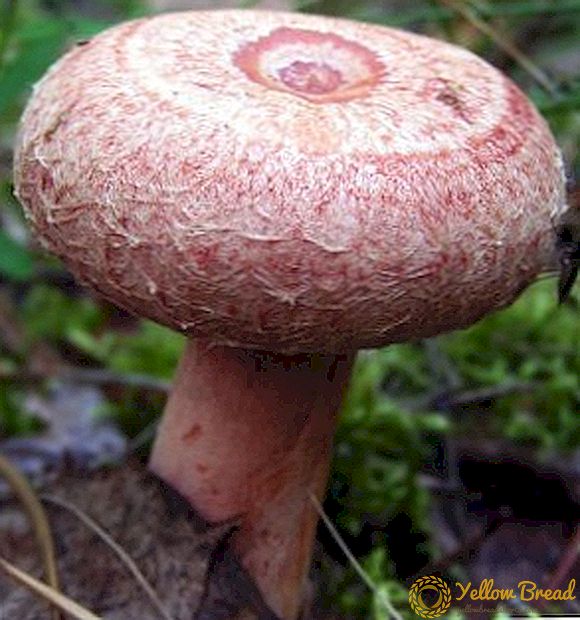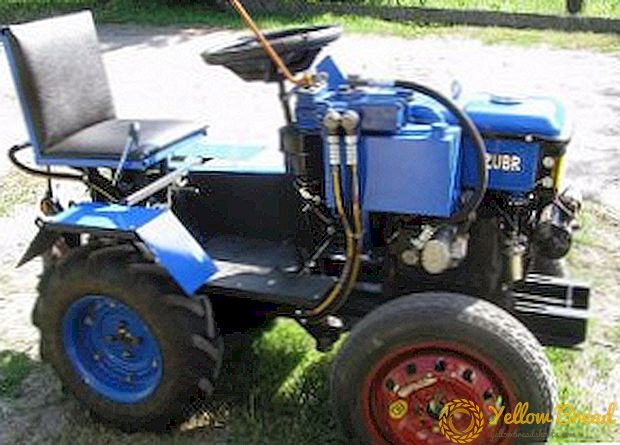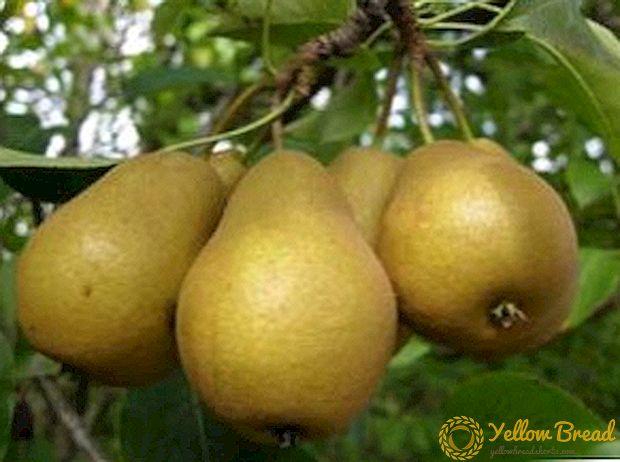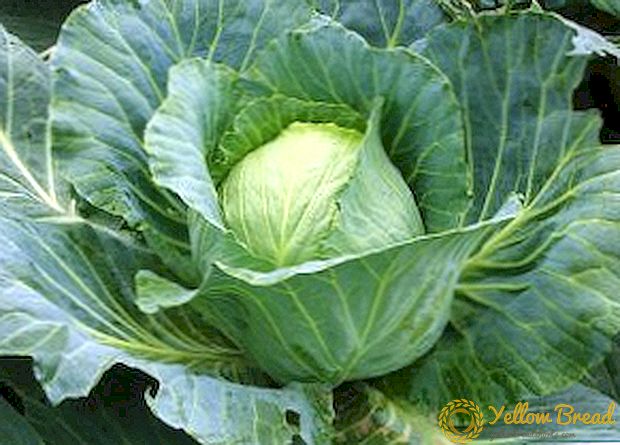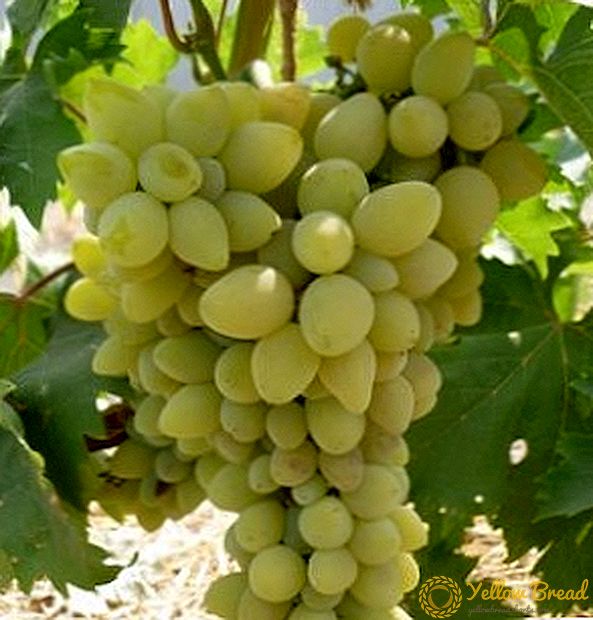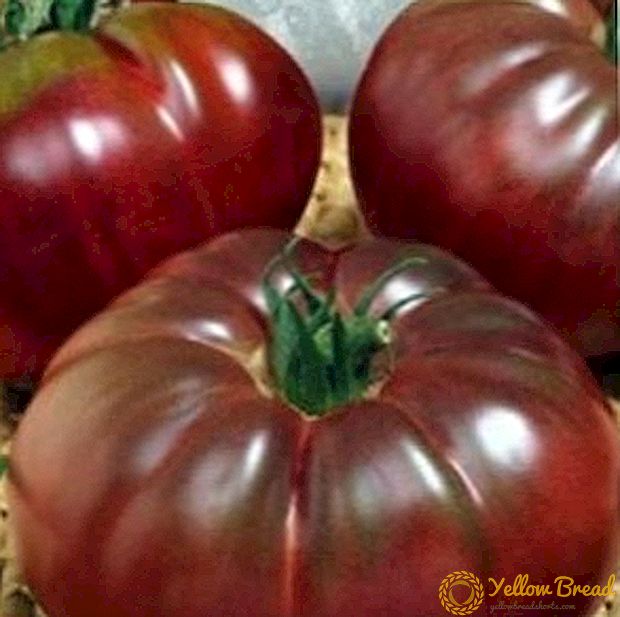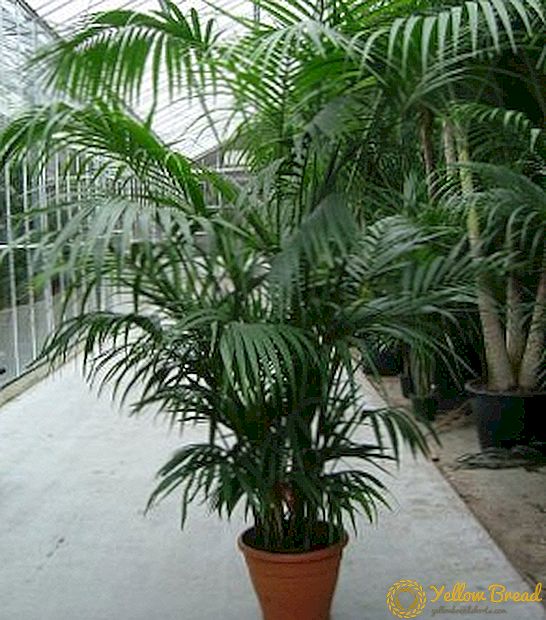 If you like unusual plants resembling palm trees, pay attention to the Howor Belmore.
If you like unusual plants resembling palm trees, pay attention to the Howor Belmore.
It will create a pleasant atmosphere in your home and decorate the interior.
- General description of the genus
- Necessary conditions for the cultivation of Belmore palm trees
- Lighting
- Air temperature and humidity
- Substrate Requirements
- Landing technology
- Growing from seed
- Reproduction by dividing the bush
- How to care for a house plant
- Watering
- Fertilizer and dressing
- Trim Features
- Transplant hovey
- Major diseases and pests
General description of the genus
Howei Belmore has another name - Kentia Belmore. Hills and coral sands of the coastal zones of Lord Howe Island are the most common place of growth. The main distinguishing feature of the plant is the trunk, which can reach a height of 13 meters. In its lower part there are extensions in the form of rings. Thanks to the pinnate leaves in the form of an arc, the length of which is from 2 to 4 meters, Hoveya takes on a special look. Leaf color is green and they have medium veins.
Necessary conditions for the cultivation of Belmore palm trees
Despite the fact that the native land of the plant are subtropics, it gets along perfectly in room conditions. However, in order for the bush to feel comfortable, it is still necessary to provide it with some amenities. 
Lighting
Hovey grow well and without bright lighting and belong to the group of shade-tolerant plants. They are best placed on the north-eastern or northern sides of the house. If your room is located on the south side, put your howe away from the windows. Young plants under 5 years old, it is important to protect from constant sunlight, as on their leaves, under its influence, burns can occur. After 5 years of cultivation, the palm tree no longer reacts so painfully to the sun's rays, but it is better not to allow their contact.
Air temperature and humidity
In summer, the ideal temperature for a plant is + 20 ... + 25 ° С.With the onset of winter, when the light becomes even less, it is recommended to lower the air temperature. However, its index should not be lower than + 12 ° С. An adult flower can tolerate conditions with low temperatures, up to 0 ° С.  Household palm tree will feel great when the humidity is 60-70%. But you should not worry if the air in your room is dry - the plant will be able to grow normally in such conditions. The main thing, periodically, during the day, to spray his leaves. This is especially true of the summer period, when the air temperature rises significantly. The first sign that the plant is bad is yellowing and drying of the tips of the leaves.
Household palm tree will feel great when the humidity is 60-70%. But you should not worry if the air in your room is dry - the plant will be able to grow normally in such conditions. The main thing, periodically, during the day, to spray his leaves. This is especially true of the summer period, when the air temperature rises significantly. The first sign that the plant is bad is yellowing and drying of the tips of the leaves.
Also, being constantly in a room with dry air, a spider mite can attack the bush. To prevent this unpleasant situation, spray leaflets often.
Substrate Requirements
Homemade palm tree is undemanding to the composition of the soil, and can grow in any land. However, if you want the plant to delight you with its beauty and freshness, we recommend using a good drainage.
The basis for it can serve as a ready-made palm substrate, which must be mixed with leaf humus and soddy soil. Perlite can be used for drainage. 
Landing technology
You can plant a palm tree in two ways: by seed and by dividing a bush. Consider in detail each of them.
Growing from seed
To achieve a positive result, it is recommended to use the seeds immediately after they are harvested or purchased in a store, as they quickly lose their germinating ability — 10% every month. You can store seeds for 18 months. After sowing fresh seed, you increase the chances of successful plant shoots. If sowing will take place at home, the best time for this event is spring and summer.  The first is to properly prepare for landing. You will need:
The first is to properly prepare for landing. You will need:
- polyethylene bags;
- small bowl, with a capacity of about 200 ml;
- seed material;
- prepared earth mixture, in which equal parts include perlite, vermiculite and leaf soil (it must be sterilized);
- abrasive stones.
At the next stage, the abrasive stone is used to destroy the hard shell of the seed.
 With that side of the seed that was removed with an abrasive, gently press it into the soil, but do not sprinkle it with earth. Then, put a plastic bag on the bowl - this will provide 100% humidity. For the seeds to germinate, it is necessary to provide some conditions:
With that side of the seed that was removed with an abrasive, gently press it into the soil, but do not sprinkle it with earth. Then, put a plastic bag on the bowl - this will provide 100% humidity. For the seeds to germinate, it is necessary to provide some conditions:- maintain 100% humidity;
- prevent the land from drying out;
- maintain the air temperature in the area of + 26 ... + 27 ° С;
- Once a day to air the seeds;
- place planting material in the penumbra.
Reproduction by dividing the bush
In conditions of industrial cultivation, in order to get a lush bush, up to 15 plant specimens are planted in one container. The best time for this breeding method is April and May. 
For the procedure you need to prepare:
- sterilized soil, which includes leaf humus, turf ground and perlite in a ratio of 2: 1: 2;
- dishes in which it will be possible to place the root system without too much difficulty.
In order for Khoveya to take root, it is necessary to ensure the following conditions:
- the plant needs bright diffused light or partial shade;
- air temperature should be within + 20 ... + 25 ° С;
- air humidity should not fall below 50%;
- it is important to protect the sapling from drafts.
If the procedure was successful, it is necessary to fertilize the soil, while reducing the concentration required for an adult palm tree twice. 
How to care for a house plant
If a palm tree grows in your home, proper care will help the plant to get a beautiful, well-groomed appearance.
Watering
It should be regularly watered palm, but do not get too carried away with this process. Inspect the soil: if its top layer is dry, then you need to moisten the soil. In the summer it is necessary to water the plant more often, since the drying of the earth is faster. In winter, the number of waterings should be reduced.

Fertilizer and dressing
It is necessary to begin top dressing of the soil in the spring, and to hold similar events regularly until autumn. Use for this fertilizer containing trace elements for ornamental deciduous plants. Do not feed the palm tree in winter.You can feed with the help of spraying the leaves with low concentration mineral fertilizers.
Trim Features
Cut the palm must be very careful not to touch the trunk. Do not remove a large number of leaves - the plant will be naked and ugly.
It is enough to cut the broken and dead leaves. Make an incision at a distance of 2 cm from the trunk. If you notice that the tips have dried on some leaves, you need to cut off these areas.
Transplant hovey
Palm is not too fond of changing the habitat, so you need to replant the bush as a last resort - when the root system fills the entire container. This usually occurs 3 years after planting.
Major diseases and pests
Unfortunately, the palm tree is subject to various diseases, which we describe below.
Leaf chlorosis. With such a problem in the lower part of the plant leaves stop growing. Most often, the disease progresses due to poor lighting and low temperatures. If chlorosis begins in very young leaves, it is necessary to normalize the acidity of the soil - it can be increased.

Dying leaves. Ailment is the result of fluoride entering the soil. It is necessary to replace the soil and make sure that the fertilizers do not contain this component.
Often caterpillars, mealybugs, aphids and spider mites can be seen on the plant. To get rid of pests, it is worth contacting a specialty store, purchase drugs and process a palm tree with them.
Khoveyya - a beautiful plant that will be a great decoration for any interior. Give him a little attention, and the palm will long delight you with its exotic look.

